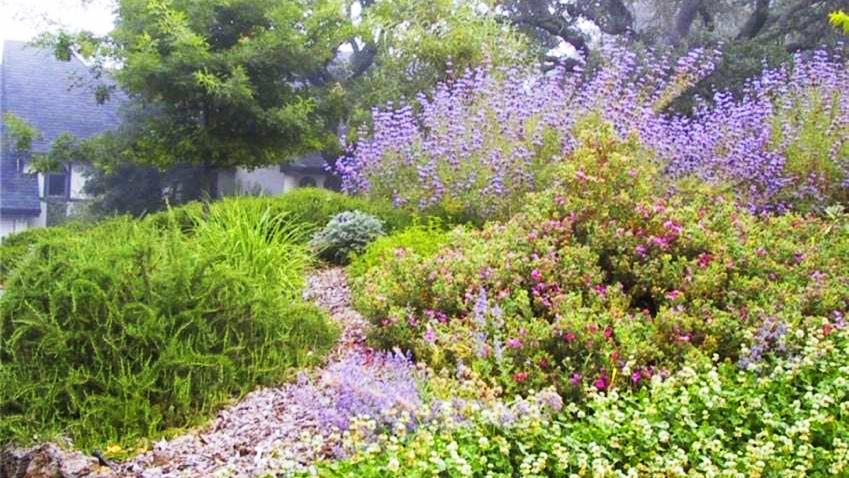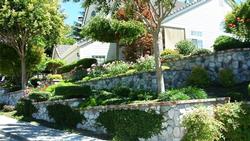Gardening on a Hillside

Marin's topography is part of our natural beauty. The views are gorgeous, but there are special considerations pertaining to erosion, water, and plant selection.
USE OUR PLANT LIST > PLANTS FOR EROSION CONTROL
Drainage runoff is the biggest concern on hillsides
• Over time, drainage runoff causes erosion.
• Erosion is when soil wears down or moves due to wind or rain.
• With time, erosion can degrade topsoil, which undermines plants and trees to the point where they fall over. It can also allow pesticides and fertilizers to enter waterways.
How to manage a hillside
Use drainage and rainwater runoff strategies
• Create berms. If there is an upslope from the house, create berms to send surface water around the house for use in lower gardens.
• Provide temporary erosion control measures for the first couple years after a new landscape has been installed. This may include wattles (long straw or fiber tubes) to slow down runoff and retain the hillside until roots of new vegetation secures the hillside.
• Strategic rock placement can slow down and redirect drainage runoff paths.
• Rely on professionals for correct installation of wattles, French drains, and other drainage techniques.
• Check local ordinances regarding runoff, as it varies by location.
Choose plants that help control erosion
• Strength in numbers. A combination of plants is more effective than a single species.
• Staggered plant placement and pathways can help slow down drainage on a hillside.
• Start small. It is easier to get smaller plants established on a steep hillside (plugs or 4-inch pots).
Use specialized irrigation techniques
• Let it soak in. Goal is for water to soak into the ground instead of running down the hill.
• Slow it down. If using drip system, place irrigation emitters on the uphill side of plants and carve out small basins to retain water so that it will soak into the root zone.
• Irrigate appropriately. Water for shorter intervals more frequently.
Choose mulch that stays in place
• Sometimes size does matter: Large chunks are typically most effective.
• Heavier is better: Straw, small bark, or cocoa hulls wash away with rain.
Be fire-smart.
• The steeper the slope, the faster a fire spreads uphill.
Be safe!
• Keep access level. If you plan to walk on your hillside, be sure there is a level path.
Should you terrace your slope?

• A series of retaining walls levels off garden spaces so rainfall seeps into soil instead of running downhill.
• Leave it to a pro. Terracing is best handled by a licensed contractor.
